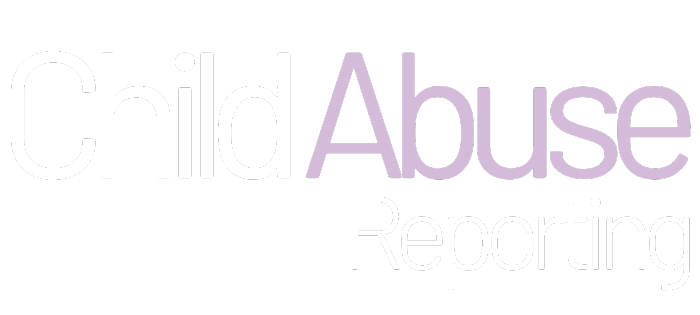According to the CDC website, about 1 in 4 girls and 1 in 13 boys experience child sexual abuse at some point in childhood, with 91% perpetrated by someone the child or child’s family knows.
Special Victims
If you’re a mandated reporter and suspect a child is being sexually or physically abused, you call the CPS hotline to make a report. But do you know what happens next?
The most serious sexual and physical abuse cases are handled by the CPS Impact Team, a multi-disciplinary group of professionals who ensure that these special victims receive the special treatment they need.
“We have some tough people working on this team,” asserts Nicole Sharp-Benson, Casework Supervisor at Monroe Country Child Protective Services. Sharp-Benson is an experienced member of the Impact Team at Bivona Child Advocacy Center, the first point of contact for an abused child once a report has been filed with CPS. “We have a relationship with all 12 law enforcement agencies within Monroe County, with an average response time of 20 minutes to get an investigator jointly assigned.”
Together with CPS caseworkers, members of the multidisciplinary team include forensic interviewers, physicians, counselors, law enforcement officers, and representatives from the criminal justice and prosecutorial community, to provide a timely and appropriate response to the abuse.
One Interview
The Impact Team experience is designed to be less traumatic for the child —with only one interview, recorded and witnessed by all members of the team at the same time from an observation area.
Prior to the establishment of a Child Advocacy Center like Bivona, an abused child would be interviewed separately by the responding officer, a CPS caseworker, an intake physician, and legal representatives. The child, already traumatized, was put in the uncomfortable position of repeating her or his story over and over again.
“All members of our team are now trained in a forensic interviewing protocol, an evidence-based model called Child First,” said Sharp-Benson. “Kids (especially those under the age of 10) are people pleasers, so they’re highly suggestive. The goal is to speak to the child in a non-leading way, letting them tell us their story.”
Help Within REACH
When a CPS case involves sexual or physical abuse, an exam is conducted by a physician at the REACH Clinic at Bivona. REACH stands for Referral and Evaluation service for Abused Children.
“Our role is not so much forensic,” said Dr. Elizabeth Murray, a pediatrician at the Golisano Children’s Hospital REACH Clinic. “It’s so the child knows her or his body is healthy and normal. It’s common for children who experience sexual or physical abuse to think their body has changed or is now different (as a result of the abuse).”
Dr. Murray said the exam is as minimally invasive as possible given the circumstances of the case. If there are criminal proceedings resulting from the allegations, physicians like Dr. Murray will testify in court to support their findings.
Dr. Murray specializes in child abuse medicine and worked in a pediatric emergency before joining the REACH Clinic in 2014, so she has seen her share of child abuse cases.
“Any adult working with children should take any disclosure from a child at face value,” she said. “If a child makes a disclosure to you first, your response should be to say, ‘thank you for sharing that with me.’” She added, “Let the experts ask the questions.”
If You See Something, Say Something
CPS and medical providers usually call the REACH Clinic. Referrals can also be made by other professionals in the community such as law enforcement, mental health providers, and primary care physicians.
While the REACH Clinic is a separate entity from CPS, Dr. Murray welcomes calls from medical providers calling for advice, acutely, when they have a child in their office or emergency dept. “If there is a child in need of help,” said Dr. Murray, “there is someone available 24/7.”
She understands that some mandated reporters get nervous about not having definitive information before calling the CPS Hotline. “Even if there is not enough to report, like red flags or behaviors,” she said, “it’s still important to make that call (to the CPS hotline). Talking to us about a case does not remove the mandated reporter’s burden.”
“The mandated reporter’s burden is not to prove the allegation,” continued Dr. Murray, “it’s reasonable suspicion that child abuse or neglect has occurred, so it’s critical that those calls be made.” DoRightByKids.org has a useful guide for mandated reporters on how to recognize abuse and neglect at https://www.dorightbykids.org/
“Go with your gut and your suspicions, it’s better to err on the side of caution for kids,” Sharp-Benson said. “If you see something, say something.” She added, “Remember that especially during the COVID era, you may be the only adult seeing a concern. Try to help this child.”
How Do I Know if My Suspicion Is Reasonable?
To assess whether your suspicion is reasonable, ask yourself the following questions:
- Do I have information that suggests that the child has been hurt or harmed (or is in imminent danger of harm) by something the parent (or person legally responsible) did or did not do?
- If the same information was given to another experienced mandated reporter (your supervisor or a co-worker) would they suspect child abuse or neglect?
If the answer is “yes” to either of these questions, you have formed a reasonable suspicion and should call the CPS Child Abuse Hotline. If you are not sure, call for a CPS consultation. If the answer is “no,” you should work with the family to prevent child abuse or neglect before it happens. Use your resources and tools to help the family.
Who and when to call:
- If a child is in immediate danger, call 911.
- If a child is not in immediate danger, but you suspect abuse or neglect, call the CPS hotline.
Resources:
CPS Hotline
1-800-635-1522
Bivona Child Advocacy Center
REACH Clinic
(585) 935-7802 (for referrals)
https://www.urmc.rochester.

